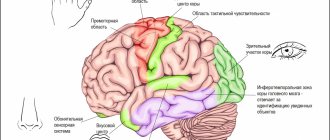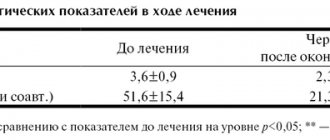Stuttering
- home
- To our clients
- Articles for parents
- Child 3-6 years old
- Stuttering
>
>
>
>
Stuttering (logoneurosis) is a complex speech disorder, the mechanisms of which are not fully understood.
Experts do not have a unified view on the causes and essence of stuttering. Stuttering (logoneurosis) remains one of the most incomprehensible and difficult to eliminate speech disorders. Traditionally, stuttering is defined as a violation of the tempo, rhythm and fluency of speech, caused by a convulsive state of the muscles of the speech apparatus. The external manifestations of stuttering are described in sufficient detail and consistently. When stuttering, the organs of articulation move with malfunctions, breathing becomes tense and short, people who stutter often speak while inhaling, and the voice is also tense. There is no consistency in the work of articulation, breathing and voice. Some people who stutter, trying to overcome their hesitations in speech, help themselves by making various accompanying movements. At the beginning, these movements seem to really make speech easier, but very quickly they become violent and make stuttering even more severe.
The main symptom of stuttering is muscle spasms of the speech apparatus. Speech spasms occur only at the moment of speech or when trying to start speaking and are expressed in involuntary contraction of the muscles of the speech apparatus. It is generally accepted that the classic description of speech cramps is presented in the monograph by A.I. Sikorsky “On stuttering ,” which was published back in 1889. He identified 16 forms of various speech spasms depending on their location. According to the place of manifestation, they are divided into respiratory, vocal and articulatory. The nature of the seizures is clonic, tonic and mixed.
The onset of stuttering can vary. Sometimes hesitations appear quickly and suddenly. In other cases, stuttering occurs gradually, unnoticed by others. The child stretches out vowels, stops, and repeats syllables or words.
To date, there is no single point of view in the literature on why children begin to stutter. But almost all researchers identify a number of factors that are important in the onset of stuttering.
1. A certain age of the child . Typically, the first signs of stuttering appear between the ages of 2 and 6 years. There have been only isolated cases where stuttering appeared after 7 years. It is at this age that the speech system is in the stage of intensive development and therefore is selectively sensitive to the influence of harmful factors.
2. State of the child’s central nervous system . Some people who stutter have serious deficiencies in their brain function. As a rule, they are a consequence of intrauterine, birth and early postpartum diseases and injuries of the central nervous system. Stuttering in this case is stable, its severity is approximately the same in different communication situations. In another part of people who stutter, studies do not reveal organic brain damage. Stuttering occurs due to weakness of nervous activity, without the death of the brain cells themselves. The speech of people who stutter can be completely normal, then suddenly there is a sharp deterioration, which can be associated with emotional stress, fatigue or illness of the child.
3. Individual characteristics of speech development . The pace of speech development is of great importance in the appearance of stuttering. The appearance of developed phrasal speech by 1.6-1.8 years of age makes the emerging functional speech system more vulnerable. A similar situation arises with some delay in speech development. In such children, intensive development of phrasal speech at 3.5-4.5 years can contribute to the appearance of stuttering. In addition, the active introduction of a second language into communication at the age of 1.5-2.5 years, when the child, due to age characteristics, has not yet sufficiently mastered his native language, is associated with great mental stress. For some children this is definitely a pathogenic factor.
4. Presence of mental trauma . It has been noted that it is shortly after suffering an acute mental trauma or against the background of chronic conflict situations that children with certain characteristics of the nervous system may experience stuttering of a convulsive nature.
5. Genetic factor . Apparently, a certain weakness of the central speech mechanisms, which are increased susceptible to the influence of risk factors, is inherited. Genetic inheritance manifests itself only in the presence of additional harmful effects.
6. Gender of the child . According to various authors, stuttering occurs 2-4 times more often in boys than in girls. The mechanism of this phenomenon is not completely clear. Researchers also note a higher percentage of left-handedness among boys. Some authors consider left-handers to be at risk for stuttering.
Regardless of which of these factors is leading in the occurrence of stuttering, it can be considered that it reduces the adaptive properties of the child’s central nervous system. Typically, a combination of several factors is necessary for stuttering to occur.
Treatment for stuttering
TREATMENT OF STUTTERING
- individual characteristics of the course of speech ontogenesis
In the speech development of children, there are periods when their nervous system experiences great stress. For the onset of stuttering, the period of intensive speech formation is of particular importance.
- features of the formation of functional asymmetry of the brain
There are many observations indicating a close connection between stuttering and left-handedness. This is indicated by the large percentage of left-handed people among people who stutter, significantly exceeding the percentage of left-handed people in the population. There are also indications that stuttering often occurs when left-handedness is re-educated to right-handedness. In cases where retraining occurs roughly, as well as in an inadequately short time, the child may develop a stutter.
- presence of mental trauma
Many authors associate the appearance of stuttering with mental trauma. Mental trauma is usually divided into acute and chronic, and the objective strength of the impact of the mental factor of trauma is not decisive. In most cases, mental trauma is the trigger for the onset of stuttering.
- genetic factor
World literature data indicate that a burdened heredity of stuttering can be traced at the level of several generations. If there is at least one stutterer among close relatives, then the risk of stuttering in subsequent generations increases sharply, especially if parents stutter.
- sexual demorphism
Stuttering occurs on average 4 times more often in boys than in girls. The mechanism of this phenomenon is not completely clear.
Researchers distinguish two clinical forms of stuttering - neurotic and neurosis-like, which are caused by different pathogenetic mechanisms.
The occurrence of neurotic stuttering in children is usually preceded by psychogenia in the form of fear or chronic mental trauma. Stuttering occurs acutely at the age of 4-6 years. The pace of speech is often accelerated, children seem to be “choked” by speech, do not finish the endings of words and sentences, miss individual words and prepositions, and make grammatical errors. Often about pronouncing sounds in the speech stream.
Before the appearance of stuttering, such children may exhibit characterological characteristics such as increased impressionability, anxiety, timidity, resentment, mood swings, often in the direction of depression, irritability, tearfulness, and impatience. Some of them, at the age of 2-5 years, may experience fears (darkness, absence from adults, neurotic enuresis, etc.). Often children have difficulty getting used to a new environment; in such a situation, characterological characteristics manifest themselves especially clearly. Such children, as a rule, do not tolerate kindergarten conditions well.
In addition to acute and chronic mental trauma, the neurotic form of stuttering in some children develops as a result of the active introduction of a second language into communication at the age of 1.5-2.5 years.
Simultaneously with the appearance of stuttering, children become even more irritable, restless motorly, and sleep worse.
The dynamics of speech impairment in the neurotic form of stuttering is characterized by a recurrent course.
The neurotic form of stuttering can have both favorable and unfavorable course.
The neurosis-like form of stuttering in children most often begins at the age of 3-4 years gradually, without visible external causes.
With this form, a history of severe toxicosis of pregnancy with threats of miscarriage, asphyxia during childbirth, etc. is often noted. In infancy, such children are restless, noisy, and sleep poorly. Their physical development is within the lower age norm or with a slight delay. They are characterized by poor coordination of movements, motor clumsiness, behavior is characterized by disinhibition and excitability. They do not tolerate heat, stuffiness, or traveling in public transport. Children in this group experience increased exhaustion and fatigue during intellectual and physical activity. Their attention is unstable and they are easily distracted. Often such children are fussy, restless, have difficulty obeying disciplinary requirements, and can be irritable and hot-tempered. The psychoneurological state of such children is assessed by clinicians as cerebrasthenic syndrome.
The difference from the norm is especially noticeable in speech development. Thus, the first words often appear only by the age of 1.5 years, elementary phrasal speech is formed by the age of 3, and developed phrases are noted only by the age of 3.5 years. Along with delayed speech development, disturbances in the pronunciation of many sounds, slow accumulation of vocabulary, and late and incomplete mastery of the grammatical structure of speech are often noted. The onset of stuttering coincides with the period of formation of phrasal speech, i.e., at the age of 3-4 years.
When examining the motor skills of children with a neurosis-like form of stuttering, attention is drawn to the pathology of motor functions, expressed to varying degrees: from insufficient coordination and mobility of the articulation organs to a violation of the static and dynamic coordination of the arms and legs. Most of the stutterers in this group have difficulty reproducing and retaining a given tempo and rhythm in memory.
Clinical examination of such children, as a rule, indicates a mildly expressed organic brain lesion of a residual nature, and in addition to general cerebral syndromes (cerebrasthenic, hyperdynamic syndromes, etc.), they exhibit residual effects of damage to the motor systems of the brain.
As a rule, there is a sharp disturbance in speech breathing: words are pronounced during inhalation or at the moment of complete exhalation.
All children with neurosis-like stuttering show a correlation of deviations from the norm in psychomotor and speech development.
In cases where children with neurosis-like stuttering receive timely (i.e., close to the time of stuttering onset) and sufficiently long-term and regular speech therapy assistance, then, as a rule, such children do not need repeated courses of corrective intervention. Their speech remains consistently fluent.
In cases where speech therapy assistance is not provided in a timely manner and in full, neurosis-like stuttering tends to progress. These cases are characterized by a gradual worsening of stuttering.
The neurosis-like form of stuttering is characterized by the fact that speech hesitations appear in any situation, both alone with oneself and in society.
Quite often in practice we encounter stutterers whose clinical picture of speech pathology is mixed.
When developing rehabilitation measures, the nature of the primary damage to the nervous system in neurotic and neurosis-like stuttering should be taken into account.
In the neurotic form of stuttering, therapeutic interventions should be aimed at reducing the excitability of emotiogenic brain structures, which can be achieved through a combination of medications and various psychotherapeutic techniques, from stress therapy, hypnosis, to autogenic training. Speech therapy classes against this background are much more effective.
People who stutter with a neurosis-like form of speech defect require long-term correctional and pedagogical interventions that promote the development of regulatory functions of the brain (stimulation of attention, memory and other mental processes), and special drug treatment aimed at reducing the consequences of early organic brain damage. Speech therapy sessions should be regular over a considerable period of time.
Considering that the end result of the pathological system is a violation of the rhythm of the speech psychomotor act, the complex of therapeutic and psychological-pedagogical influences necessarily includes methods aimed at rhythmizing movements. Practicing to music with rhythmic movements of the arms, legs, and torso, and subsequently combining these movements with singing, melodic recitation, and reading poetic and prose texts, has a normalizing effect on the flow of the speech act.
Of particular importance in this case is the automation of the movement of the fingers of the dominant hand in the rhythm of the structure of verbal constructions of varying degrees of complexity (L. Z. Harutyunyan).
Observations show that the speech of a stuttering child is influenced by varying degrees of independence.
This means that the frequency and strength of speech spasms depends on whether the child speaks himself (asks questions, spontaneously expresses his thoughts, desires) or does it with someone’s help. This help (direct or indirect) can be expressed in giving him a sample phrase and even simply in saying it together.
Depending on the degree of independent speech, several gradually more complex stages can be distinguished:
Conjugate speech, when the child pronounces phrases following the speech therapist and together with him. This is the easiest form of speech for people who stutter. In the case of even very severe forms of stuttering, the child speaks completely freely. This is due to the fact that with this form of speech, he actually only copies someone else’s phrase (its construction, manner of pronunciation), and even pronounces it not independently, but with outside help. The degree of independence here is practically reduced to zero.
Reflected speech involves (unlike conjugate) only the child repeating a phrase after the speech therapist without pronouncing it together. The child here also uses a completely alien phrase construction, its tempo, intonation, and manner of pronunciation, but he is already partially deprived of help in the form of pronouncing it together. This is also a form of speech that is usually accessible to all children who stutter.
Echolalia, stuttering, stumbling, writer's cramp, logorrhea
The phenomena of echolalia are the patient’s involuntary and one-time repetition of fragments of oral speech addressed to him (Wernicke, 1900). Usually the last heard phrases and words are repeated, out loud and with the same intonation. This type of echolalia is called true. At the same time, the interlocutor’s questions can be repeated - echology. When they are stated alternatively: “...yes or no” - the patient answers with the word “no”; If the question ends with the expression “no or yes,” the patient answers with the word “yes.” When echolalia and speech iteration are combined, repetitions can be multiple. Echolalia can be delayed, when repetition does not occur immediately, but after some time - phonographism.
The last symptom occurs only in children; it has not been described in adult patients. A. Pick (1902) described mitigated (lightened) echolalia, in which patients repeat, slightly modified, only questions addressed to them. It is believed that mitigated echolalia precedes the appearance of true echolalia, in particular this occurs with Pick’s disease. Echolalia sometimes occurs in the structure of verbal hallucinations.
| | Speech disorders can occur in many mental disorders, from autism to schizophrenia. |
In this case, the voices repeat what the patient has said or voice his thoughts, or the patient himself involuntarily repeats the hallucinatory speech. Echolalia is observed in catatonia, atrophic processes, Kanner's syndrome, as part of regressive syndromes in children (physiological and painful echolalia are usually separated in children by a known period of time, but sometimes such a period does not exist if the disease began at the age of two years or less).
The written version of echolalia is represented by echography in the form of copying a text, offered not for copying, but as a sample. Echography can also be manifested by the fact that when performing a written task, patients copy the oral statements of those present. So, instead of responding to a request to write his name, the patient writes down the text of the request.
Stuttering is speech with frequent repetition or prolongation of its sounds, syllables, and words. At the same time, stops and hesitation of speech are observed with a violation of its smooth, rhythmic flow. Conditionally refers to systemic neuroses. Most often begins in childhood, between the ages of 18 months and 9 years. It often occurs acutely, after a nervous shock. Acute peaks in the onset of stuttering were found between 2–3 and 5–7 years. In this case, the appearance of stuttering is preceded by mutism (from the Latin mutus - mute). In other cases, it develops gradually in an unfavorable speech environment (stuttering among peers and adults, increased demands on speech, accelerated learning of a foreign language, etc.), which may be facilitated by a corresponding predisposition. In the initial stage of stuttering, tonic convulsions predominate in the vocal and sometimes in the respiratory muscles, causing patients to “pull” sounds. Later, tonic-clonic convulsions appear in the articulatory muscles, and repetitions of syllables and words are added in speech. In some cases, stuttering occurs only when the rate of speech accelerates - bittarism. Speech becomes jerky, with pauses for breathing, and the pronunciation of individual words is impaired.
| | If you have speech problems, we advise you to consult a psychiatrist |
The following phases are identified in the development of stuttering:
- the first phase occurs in preschool age. The disorder manifests itself episodically, lasting weeks, months, followed by long periods of normal speech. Children stutter more often if they are excited, upset, if they need to say a lot and quickly, or in a situation of speech pressure. After this period, a significant proportion of children recover;
- the second phase refers to primary school education. There are no periods of normal speech, or they are short. Children are aware of their stuttering and perceive themselves as a stutterer. Stuttering concerns the main parts of speech (nouns, verbs, adjectives, adverbs);
- the third phase lasts from 8 years of age and ends in adolescence. In this case, stuttering occurs and intensifies in certain situations (called at school to answer the board, when talking with strangers, on the phone, when shopping, expecting ridicule, etc.). Some words suffer more than others;
- the fourth phase continues from adolescence. Logophobia is observed - fear and exaggeration of the severity of stuttering, patients are afraid of words, sounds, speech situations, display sensitive ideas of attitude, depression. Patients often replace some words with others, avoid communication, prefer to remain silent, not wanting to draw attention to themselves, and become unsure of themselves not only in relation to speech.
Most mild cases of stuttering result in recovery or significant improvement in speech. In overcoming stuttering, eliminating logophobia, teaching normal speech skills, and eliminating traumatic situations are important.
Neurosis-like and organic stuttering is distinguished from neurotic stuttering. Neurosis-like stuttering occurs against the background of organic brain damage. In this case, from the very beginning, tonic-clonic convulsions in the articulatory muscles predominate, and thyroid hyperkinesis is also observed. The intensity of stuttering depends little on anxiety and situations. The reaction to stuttering does not reach the level of pronounced logophobia. Organic features of the psyche are revealed. Organic stuttering is caused by hyperkinesis in the articulatory and respiratory muscles. The individual's reaction to stuttering may be absent or insignificant. Usually there is a significant psychoorganic decline in personality.
Stumbling or speaking excitedly , unclear speech (poltern) - a disorder of fluency and tempo of speech. Speech is irregular, consisting of quick, sharp bursts and stops of speech that are not related to the grammatical structure of the sentence. The melody of speech is disturbed. There are no repetitions of words or syllables. There may be difficulties in choosing words and constructing phrases. The disorder is associated with organic pathology of the brain. Awareness of the speech defect is incomplete.
Writer's cramp (graphospasm, writer's cramp) is a violation of writing skills, similar to stuttering. Caused by tonic spasms of the muscles of the fingers with a violation of their synergy. At the same time, there may be muscle cramps in the forearm, shoulder and neck, as well as pain in the arm. Sometimes, on the contrary, paresis of the hand muscles develops, in other cases the pain syndrome predominates. These disorders disappear immediately after the writing stops and when the patients give up the pen. Other manual skills are not impaired. It occurs in people who eat a lot in unfavorable conditions: increased demands on writing from outside, as well as the individual’s negative attitude towards such activity. It usually occurs in adulthood, more often in men with an anxious, suspicious and hysterical character. Other occupational dyskinesias are observed less frequently: in violinists, hairdressers, and representatives of other manual professions. It is believed that the development of professional dyskinesias is facilitated by overload of the motor system of the corresponding skill, endogenous predisposition, local blood circulation, and cerebral atherosclerosis.
Logorrhea (from the Greek rhoia - flow, flow) or verbomania - uncontrolled speech excitation with acceleration of oral speech, speech flow. The ability to listen to others is lost or initially absent. Team of speech disorders. Logorrhea may be caused by forced speaking in patients with speech motor automatism. Patients report that they are forced to speak a lot and quickly due to some outside influence on them (“hypnosis”, “psychotropic weapon”, etc.). Manic patients speak a lot, quickly and usually very loudly, while they seem to lose the ability to think to themselves, and their inner speech suffers. Excessive talkativeness may occur in older patients, and they also lose the ability to think to themselves. Extreme talkativeness occurs in some psychopaths. Written logorrhea is represented by graphomania - empty profuse writing, usually pretentious, pretending to be recognized.
Back to contents







